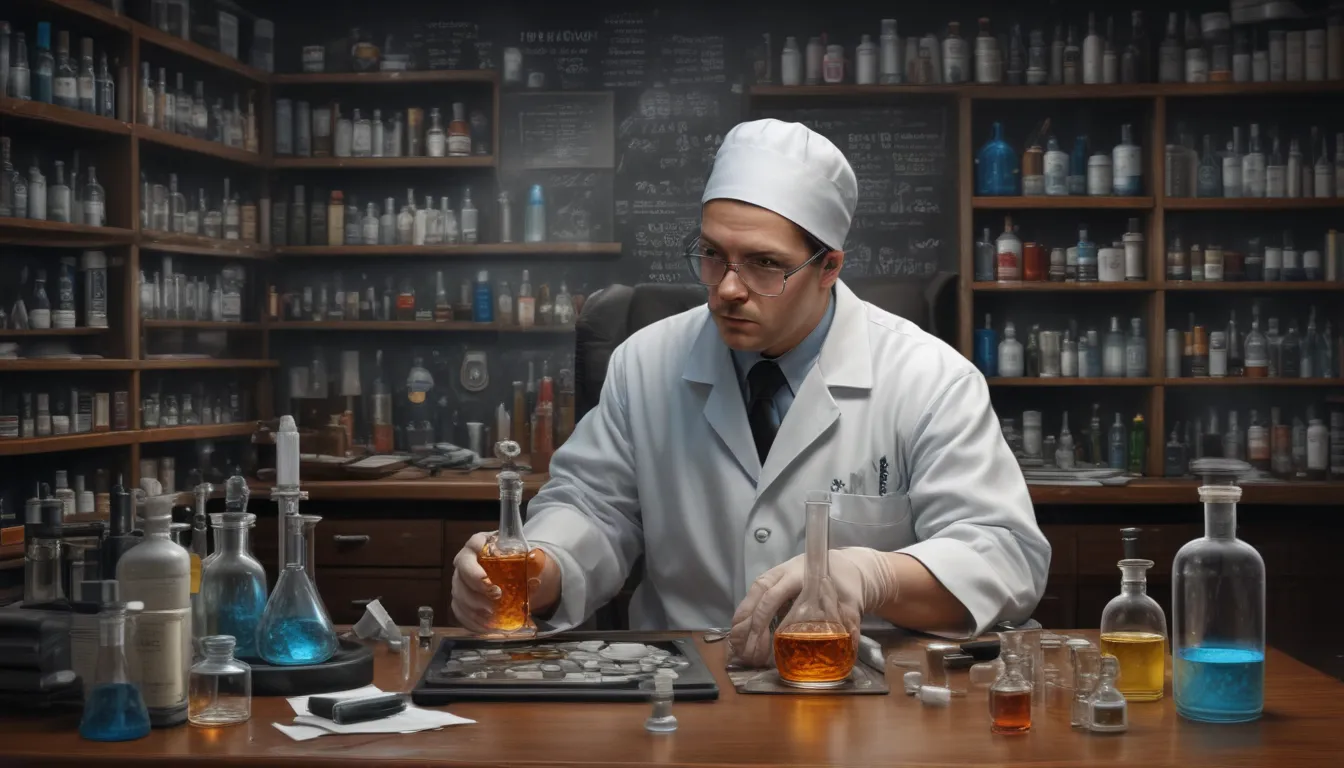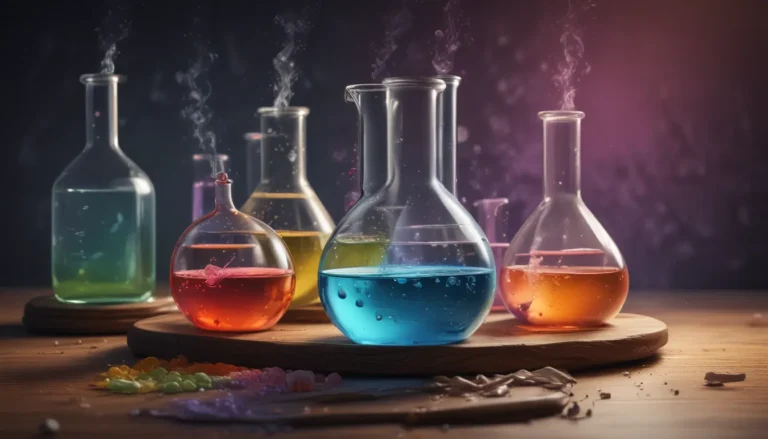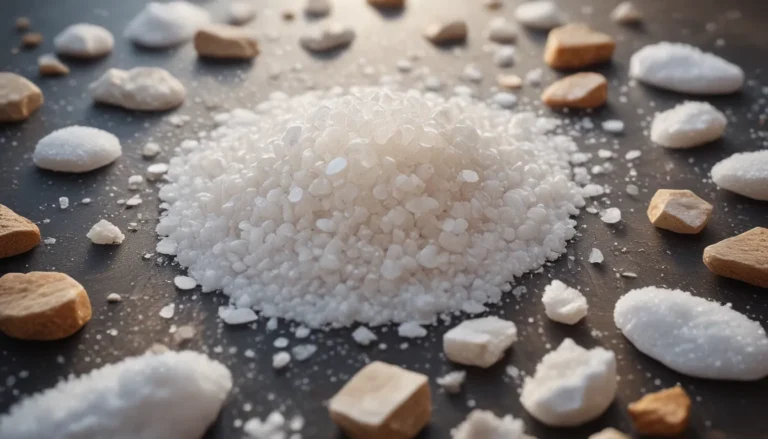A Note About Images: The images used in our articles are for illustration purposes only and may not exactly match the content. They are meant to engage readers, but the text should be relied upon for accurate information.
Forensic chemistry is a captivating field that melds the principles of chemistry with criminal investigation to unravel mysteries and solve crimes. This discipline plays a pivotal role in providing valuable information to law enforcement agencies and the legal system through the meticulous analysis of evidence. In this article, we will take a closer look at sixteen astonishing facts about forensic chemistry, shedding light on its applications, techniques, and discoveries that make it an indispensable tool in the fight against crime.
The Significance of Forensic Chemistry
- Forensic chemistry utilizes advanced techniques to identify poisons, analyze trace evidence, and link suspects to DNA samples, making it a crucial component in criminal investigations.
- By examining bloodstain patterns, toxic substances, and digital evidence, forensic chemists unearth hidden clues, unravel the causes of death, and offer insights into criminal activities.
Unraveling the Mystery of Poisons
Forensic chemistry plays a vital role in identifying and analyzing various poisons that can be utilized in criminal acts. Through cutting-edge technologies and techniques, forensic chemists can accurately pinpoint the presence of toxins, aiding in the resolution of crimes.
Harnessing the Power of Trace Evidence
Forensic chemists specialize in analyzing trace evidence, such as fibers, hair, glass shards, and paint chips. These minute fragments provide valuable insights into crime scenes, assisting investigators in piecing together intricate cases.
DNA Analysis: A Breakthrough Technique
DNA analysis stands as a breakthrough in forensic chemistry, enabling investigators to establish connections between suspects and victims by studying DNA samples from crime scenes. This technique enhances accuracy in identifications and increases the likelihood of apprehending criminals.
The Crucial Role of Ballistics
Collaborating closely with ballistics experts, forensic chemists analyze gunshot residue, bullet fragments, and firearms to discern the weapon type, firing distance, and aid in reconstructing shooting incidents. This partnership proves instrumental in solving crimes involving firearms.
Shedding Light on Arson Investigations
In the realm of arson investigations, forensic chemistry plays a pivotal role. Through the analysis of fire debris, accelerants, and residues, experts can pinpoint the cause of fires, identify potential arson cases, and offer essential evidence for legal proceedings.
Combatting Drug Trafficking
Forensic chemists exhibit prowess in identifying and analyzing illicit drugs, employing various instrumental techniques to ascertain the composition and purity of drug substances. Their contributions are invaluable in law enforcement’s battle against drug trafficking and abuse.
Decoding Bloodstain Patterns
Forensic chemistry plays a crucial role in analyzing bloodstain patterns left at crime scenes. By scrutinizing the shape, size, and distribution of bloodstains, experts can reconstruct events, determine impact angles, and gain insights into the dynamics of a crime.
Uncovering Truth through Toxicology
Toxicology and postmortem examinations benefit greatly from the expertise of forensic chemists. By analyzing biological samples for the presence of drugs, alcohol, and other toxic substances, experts aid in determining causes of death and furnish crucial evidence for criminal investigations.
Expanding Horizons: Digital Forensics
The realm of digital forensics has embraced forensic chemistry, with experts analyzing digital evidence from devices like computers and mobile phones to uncover information related to cybercrimes and online fraud. This intersection marks a new frontier in forensic investigations.
Delving into Microscopy
Forensic chemistry frequently relies on microscopic analysis to scrutinize small evidence fragments. Through advanced microscopy techniques, experts can identify specific elements, crystals, and fibers, facilitating the identification and comparison of trace materials.
Championing Environmental Justice
Forensic chemists play a pivotal role in investigating and analyzing environmental crimes, examining soil, water, and air samples from contaminated sites to identify pollutants and trace their origins. This aids authorities in formulating effective remediation strategies.
Recreating Crime Scenes with Glass Analysis
The analysis of glass fragments found at crime scenes is a task entrusted to forensic chemistry experts. By comparing refractive indices, densities, and elemental compositions, these professionals can determine the source of glass and potentially establish links to suspects or weapons involved in crimes.
Upholding Integrity: Chain of Custody
Forensic chemistry underscores the importance of maintaining a strict chain of custody for evidence. This practice ensures the preservation of evidence integrity, preventing contamination or tampering and upholding its admissibility in legal proceedings.
Evolving Landscape of Forensic Chemistry
Forensic chemistry has witnessed significant evolution, propelled by technological advancements and refined analytical techniques. This progress has empowered forensic chemists to deliver more accurate and reliable results, enhancing investigative outcomes and courtroom proceedings.
Synergy Between Forensic Chemistry and Biology
Forensic chemistry and forensic biology collaborate closely to solve crimes effectively. By amalgamating the analysis of chemical evidence with biological evidence, such as DNA, experts offer a holistic understanding of crimes, boosting the identification of perpetrators.
Illuminating Firearm Examinations
Forensic chemistry serves a critical role in firearm examination, particularly in analyzing discharged bullets, cartridge cases, and gunshot residue. These analyses offer vital insights into the type of firearm used, aiding in linking it to specific crimes.
Conclusion: Empowering Justice through Forensic Chemistry
Forensic chemistry stands as a cornerstone in criminal investigations, furnishing invaluable evidence to solve crimes and deliver justice to the affected. With a gamut of applications and techniques at their disposal, forensic chemists continue to evolve and contribute to the advancement of forensic science.
From scrutinizing fingerprints to identifying substances at crime scenes, forensic chemists wield an array of tools and methods to uncover essential details aiding in understanding crime circumstances. By synergizing their knowledge of chemistry with advanced laboratory techniques, forensic chemists provide precise and credible results admissible in court.
As the field of forensic chemistry progresses, it holds the promise of offering innovative solutions to bolster investigations further. By remaining at the vanguard of scientific advancements, forensic chemists can continue to make substantial contributions to the criminal justice system, ensuring accountability for the guilty and protection for the innocent.
FAQs: Unveiling Forensic Chemistry
Was this page helpful?
Our commitment to delivering trustworthy and engaging content drives our mission. Each fact on our site is contributed by users like you, offering diverse insights and information. Our dedicated editors meticulously review each submission, ensuring that the facts we share are not only fascinating but also credible. Trust in our dedication to quality and authenticity as you explore and learn with us.






